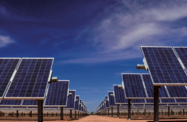A decision expected later this year on a tender for the provision of a series of nuclear power stations in South Africa could provide a long-term solution to the country’s power shortfall.
South Africa President Jacob Zuma has pledged to double the amount of electricity from nuclear by 2023. To date the government has carried out vendor “parade” workshops in which five countries, including the US, South Korea, Russia, France and China, came to present their proposals on nuclear.
However, the proposal to add 9600 MW of power to the national grid with the construction of seven nuclear plants will come at a cost, with estimates putting the price tag for the project at up to R1.2trn ($100bn).
Upgrades needed
The need for the ambitious proposal is clear. Ageing infrastructure and the slow rollout of new generation capacity is placing an increasing strain on the South African economy, disrupting service provision and reducing industrial output. New capacity from Eskom is scheduled to come online in the form of two coal-fired power plants, Medupi and Kusile, which will produce 4800 MW each, and are expected to be completed by 2021. The first of six units at Medupi started producing power in March, but both projects have faced delays.
The situation has taken its toll on the economy. According to a report tabled in parliament by the Department of Public Enterprises (DPE) in March, state electricity authority Eskom’s latest power shedding programme is costing between R20bn ($1.6bn) and R80.1bn ($6.5bn) a month, depending on the extent of the scheduled cuts.
Analysts estimate shortfalls in power supplies have cost R300bn ($24.7bn) over the past seven years. Dawie Roodt, chief economist at Efficient Group, said that power shortages have wiped 10% off the potential growth of the economy in the period 2007-14, while also costing more than 1m job opportunities. This year, the economy could have expanded at 3% rather than the forecast 2% if electricity restrictions had not been a limiting factor, Roodt told Bloomberg in early April.
Costs are set to mount further, as power cuts put pressure on key sectors of the economy. Output from the manufacturing sector, which accounts for 13% of South Africa’s economy, contracted by 0.5% year-on-year in February, according to data from Statistics South Africa, with the decline in production mainly attributed to cuts in power supplies.
Door open to options
While there has been increased interest in developing alternative energy production capacity, with both solar and wind power options in South Africa, proponents of nuclear energy contend renewables will not be able to meet the rising demands for electricity in the decades to come.
Though renewable energy sources are a viable option for bridging the short-term energy gap in South Africa, they do not solve the country’s long-term power problem. This relates to a shortage of baseload capacity, a situation which will be exaggerated in 2023 with the decommissioning of a number of old generation coal-fired power stations, said Viktor Polikarpov, regional vice-president for sub-Sahara Africa of Russian state nuclear energy corporation Rosatom.
“Baseload is 24/7 non-stop power generation,” Polikarpov, whose firm is one of the participating vendors in the contest to supply nuclear generation capacity to South Africa, told OBG. “Renewables are very well suited for smaller off the grid projects but when considering the fact that the sun and wind don't shine and blow 24 hours a day, you would need to store this energy somewhere. You'll need a lot of batteries to store renewable power. You simply can’t supply big cities or large industry without baseload.”
Nuclear ambition
A crucial aspect of the government’s nuclear initiative involves ensuring an appropriate level of local content in the programme. Rosatom has emphasised that much of the money spent on the projects will remain in country, with most of the component input, along with construction, to be tendered locally.
This could have an additional spin-off for the economy. If South African firms can develop a proven track record of contribution to nuclear energy projects they could be in the running for tenders in other nuclear energy programmes in Africa. Nigeria signed an $80bn agreement with Rosatom for four power stations in mid-April and other countries across the continent are also mulling nuclear power.
South Africa has other options to expand its baseload capacity, but growing concerns over carbon emissions militates against increased use of coal, the main fuel source in use at present. Imports of gas or utilising diesel are also costly while imports of hydroelectricity from elsewhere in Africa such as Mozambique have proved unreliable.
Another factor driving the push for nuclear energy is the fact that many of South Africa’s coal-fired stations are nearing the end of their operational lifespan, said Yves Guenon, managing director for Areva South Africa, another contender for the nuclear energy contract. With much of its ageing network of fossil fuel power stations set to close before 2035, South Africa will need a massive expansion of baseload generation capacity just to offset plants going off line, let alone meet rising demand and sustain growth.
“SA is an energy-intensive user country,” Guenon told OBG. “No one will invest in the country if energy/power is not certain. When you have a smelter or a mine, energy is paramount, so you need baseload and nuclear which can provide that. Energy is an enabler of economic activity.”

